Satyajit Ray: An Auteur of the Highest Order
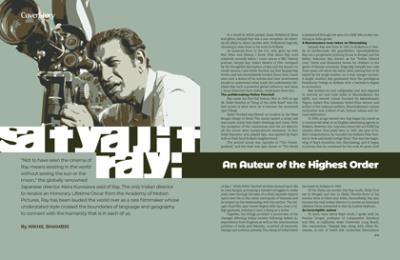
“Not to have seen the cinema of Ray means existing in the world without seeing the sun or the moon,” the globally renowned Japanese director Akira Kurosawa said of Ray. The only Indian director to receive an Honorary Lifetime Oscar from the Academy of Motion Pictures, Ray has been lauded the world over as a rare filmmaker whose understated style crossed the boundaries of language and geography to connect with the humanity that is in each of us.
In a world in which people chase Hollywood fame and glitter, Satyajit Ray was a rare exception. He rejected all offers to direct movies with Hollywood legends, choosing to stay close to his roots in Kolkata.
As someone born in the U.S., who grew up with Star Wars and Disney, I knew little about Ray until relatively recently when I came across a BBC History podcast, Satyajit Ray: India’s Masters of Film. Intrigued by the thoughtful description of Ray and his impact on world cinema, I saw Pather Panchali, my first Satyajit Ray movie, and was immediately hooked. Since then, I have seen over a dozen of his movies and have interviewed people to understand what made the understated, idealistic Ray such a powerful global influence; and what I, as an American-born Indian, could learn from him.
The pathbreaking Pather Panchali
Ray made his first full feature film in 1955 at age 34. Pather Panchali or “Song of the Little Road” was the first movie of what went on to become the renowned Apu Trilogy.
Pather Panchali was filmed on location in the West Bengal village of Boral. The movie lacked a script and was made solely from Ray’s drawings and notes. With the exception of the cameraman and the art director, all the actors were inexperienced amateurs. In fact, Subir Banerjee, who played Apu, was spotted by Ray’s wife in their local Kolkata neighborhood.
The second movie was Aparajito or “The Unvanquished,” and the third was Apur Sansar or “The World of Apu.” While Pather Panchali revolves around Apu’s life in rural Bengal, portraying a family’s struggles to make ends meet through the eyes of a child; Aparajito depicts Apu’s new life in the urban metropolis of Varanasi and its impact on his relationship with his mother. The trilogy’s final film Apur Sansar begins with Apu, now a college graduate, striving to earn a living as a writer.
Together, the Trilogy provided a microcosm of the changes affecting Indian society following India’s independence from England as well as the simultaneous partition of India and Pakistan—a period of traumatic change and endemic poverty. The sweep of India’s birth is presented through the eyes of a child who is also maturing as India grows.
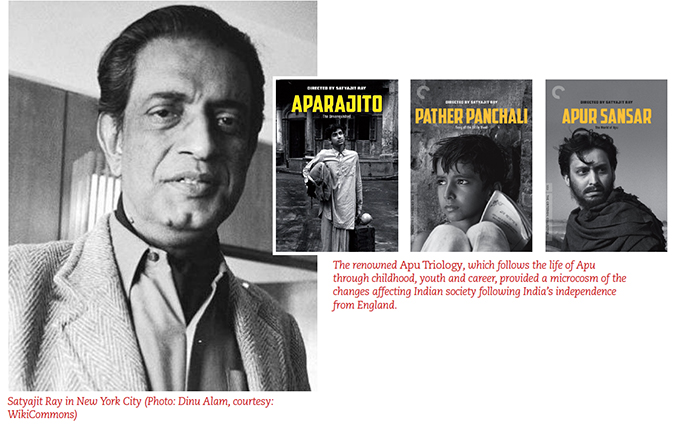
A Renaissance man takes on filmmaking
Satyajit Ray was born in 1921 in Kolkata to a family of intellectuals. His grandfather, Upendrakishore Ray, ran a progressive printing house in Bengal; and his father, Sukumar Ray, known as the “Indian Edward Lear,” wrote and illustrated verses for children in the genre of literary nonsense. Tragically, Satyajit was only three years old when his father died, leaving him to be raised by his single mother on a very meager income. A bright student, Ray graduated from the prestigious Presidency College in Kolkata with a bachelor’s degree in economics.
Ray studied art and calligraphy; and was exposed to oriental art and rural India at Shantiniketan, the idyllic and revered school founded by Rabindranath Tagore, India’s first Literature Nobel Prize winner and author of the national anthem. Shantiniketan’s unique curriculum was a blend of art, human values and cultural exploration.
In 1943, at age twenty-two, Ray began his career as a commercial artist at an English advertising agency in Kolkata. However, his corporate career did not fulfill his creative drive. Four years later, in 1947, the year of India’s independence, he founded the Kolkata Film Society to view and study foreign films. This was the beginning of Ray’s transition into filmmaking, and it began a journey that he continued for the next 45 years until his death in Kolkata in 1992.
Of the thirty-six movies that Ray made, thirty-four are in Bengali and two in Hindi. Twenty-three of his movies were in black and white. Remarkably, Ray also became the only Indian director to receive an Honorary Lifetime Oscar presented to him by Audrey Hepburn.
An incorrigible auteur
To learn more about Ray’s work, I spoke with Dr. Pravina Cooper, professor of comparative literature and film at California State University Long Beach. She commented, “Satyajit Ray, along with Akira Kurosawa, is one of Asia’s few modernist filmmakers. Modernistic cinema is a cinematic composition that produces a kind of anxiety about the modern world. Ray’s specific technique—Italian realism—used three or four methods to depict rural life with a documentary feel, ordinary people and faces, black and white grittiness, and real-world locations instead of inside a studio.”
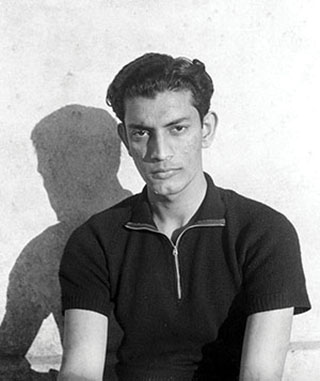 Enthusiasm about Ray is not limited to film scholars. Dr. Sam Hariharan is a business professor at Babson College in Boston. When I mentioned my interest in Satyajit Ray, he immediately responded, “[Ray] was clearly an auteur. He was literally the sole author of what he did. Everything was totally his vision. There are stories of him storyboarding an entire movie himself; and not deviating very much from his plan, down to even where the camera would be during the filming.”
Enthusiasm about Ray is not limited to film scholars. Dr. Sam Hariharan is a business professor at Babson College in Boston. When I mentioned my interest in Satyajit Ray, he immediately responded, “[Ray] was clearly an auteur. He was literally the sole author of what he did. Everything was totally his vision. There are stories of him storyboarding an entire movie himself; and not deviating very much from his plan, down to even where the camera would be during the filming.”
[Right] Twenty-two year old Satyajit Ray at Shantiniketan. (Photo: WikiCommons)
Ray even taught himself music in order to write the score for his movies. Early in his career, he worked with Ravi Shankar on a movie and realized how Shankar, as a star professional musician, “had his own ideas about the kind of music that was right.” Ray realized that all experienced professionals would bring their own biases to his movies. Thus began an approach that guided Ray through his lifetime of filmmaking: to do as many aspects of the movie himself as possible and to recruit amateurs instead of experienced professionals when needed for specific roles.
An understated but evocative style that transcends barriers
When Ray passed away in 1992, the New York Times called him a “cinematic poet” and wrote, “[Ray] fashion[ed] understated, humanistic films on the various classes of Bengali society, the clash of old and new values, and the effects of rapid political and economic changes on individuals.” In Ray’s own words, “Villains bore me. [The themes of] good vs. evil, white vs. black, hero and villain. It is an age-old formula for evading the real truth.” By going deep into the complex shades of grey in between extremes of human behavior, Ray created a sense of realism with which the viewer could relate, an authenticity that could be easily associated with human emotions in daily life.
The globally renowned Japanese director Akira Kurosawa said of Ray, “The quiet but deep observation, understanding, and love of the human race, which are characteristic of all his films, have impressed me greatly. Not to have seen the cinema of Ray means existing in the world without seeing the sun or the moon.”
Dr. Cooper recalls the ending scene in Apur Sansar in which now-adult Apu (played by Soumitra Chatterjee) marries Aparna (Sharmila Tagore). She shares, “To show that [Apu] has consummated the marriage, you just see him playing with a bobby hairpin from his bride’s hair, that is it. Those are the kind of subtle gestures which, I think, only Ray can portray. The tenderness of love is what he is very good at.”
Charulata, made by Ray in 1964, which is based on Tagore’s book Nastanirh or “The Broken Nest,” illustrates how the wives of wealthy husbands, in many cases, are lonely, unhappy and unfulfilled despite having all the material comforts they desire. While these emotions and feelings may be widely prevalent, possibly even more so in today’s world, Ray’s genius was in how he projected them on the screen with minimal drama.
Charu, the wife of a successful newspaper owner, longs for companionship. Her longing is portrayed powerfully through a series of unfolding images and almost no words in a manner that is unique to Ray. She lives a lavish lifestyle, but she feels trapped, neglected and lonely. Ray beautifully captures Charu’s yearning curiosity for the outside world in the opening scene as Charu roams around the house reading a book and then begins playing the piano. As a video on YouTube titled “Women in Satyajit Ray Films” states, “She is bored with each activity because she is doing it for the nth time; ultimately surrendering to boredom.” And then she observes passersby on the street through opera glasses, “similar to a bird trapped in a cage admiring the world outside.”
Dr. Cooper highlighted the void of love in Charu’s life and how Ray portrays it in the movie, “Her husband is walking back and forth behind her but Charu does not really notice or register him.” According to Dr. Cooper, one scene especially illustrative of this is when Charu is sitting on a swing with Amal (Soumitra Chatterjee), her brother-in-law, by her side. She stated, “Cinematically, she goes high and comes down with each swing. It lyrically embodies her own feelings. She has this light smile, and her eyes are very hungrily looking at Amal. She has him pinned down and their feelings of attraction for each other are evident, but they are both also restrained. Ray’s knack of capturing the gentleness of Amal’s love has not been portrayed by other directors.”
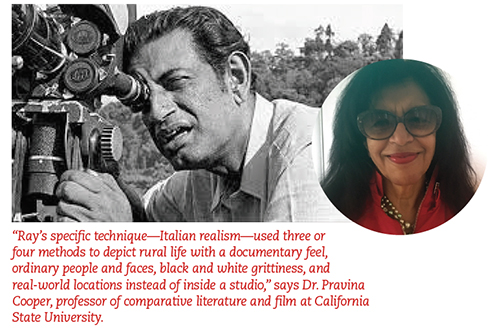
A feminist ahead of his times
Ray’s feminist views were strongly influenced by Tagore. An article in Indian Express, “Tagore and his Women: Works that Conveyed Feminism very Strongly,” describes how “Tagore strongly believed in fighting for women’s upliftment using his pen as a weapon. His writing campaigned for women’s equality, freedom, justice, power, dignity and rights.” Some Satyajit Ray films of this genre are based on Tagore’s works, and in fact, Ray also made a documentary about Tagore in 1961.
One of Ray’s main themes during the 60s was the role of women in urbanizing India. According to “Women in Satyajit Ray Films,” “This was a time in Indian cinema when women were typecast into extremely polarizing images. The typical heroine in the classic Bollywood movies during Ray’s period was a beautiful but long-suffering, silent presence whose virtue was portrayed in her willingness to sacrifice her personal desires in service to her husband and in-laws. At the other extreme, one would see a cabaret dancer, highlighting the contrast with the traditional, virtuous Indian heroine. The average Indian filmmaker seemed unaware that a woman can also lie somewhere in between. This is what made Ray stand leaps ahead of his contemporaries.”
SheThePeople, an Indian digital media website and Asia’s largest women’s channel that reaches more than 85 million women, has one of the most insightful statements about women in Ray’s movies. An article on the site titled “Satyajit Ray’s Women Were Complementary to Men Rather Than Equals” explains how despite being a staunch feminist, none of Ray’s films are aggressively women-centric or spew hatred against men. Rather, “in a very subtle manner, his work proves that to portray women’s perspective, one need not undermine the contributions of men.”
This is the sentiment that Ray portrays in Mahanagar (The Big City) regarded by many as the first feminist film of Indian Cinema. An excerpt in “Women in Satyajit Ray Films,” shows how in Mahanagar, Arati, a wife from a conservative middle-class family, has to seek employment and begins working as a door to door saleswoman to supplement her husband’s income. Although her husband is initially supportive of her endeavor, he becomes increasingly insecure when he loses his job and Arati becomes the sole breadwinner. Even as Arati gains in confidence and finds great satisfaction in her work, Ray shows her as an empathetic partner to her husband. When her husband comments about how she “used to be a housewife,” Arati responds gently, “I am still a housewife.”
An article in The Times of India, “The Feminist Women in Satyajit Ray’s Films” quotes, “Ray’s films stand out for their powerful female characters. He portrays women as being real human beings who are burdened with their sense of struggles, yet emboldened by their grit to survive. For Ray, it is a question of cinematic representation of women contributing to and constructing our understanding of what a woman is.”
In many of his movies, women are central characters, and in an interview on YouTube, Ray remarks,” I find women more interesting. In my experience, I have found that women, by and large, have a stronger fiber, they have a stronger character spine. Possibly because nature has made them physically less strong, they have been endowed with stronger character, with more integrity.”

Films that capture the political, economic and cultural ethos of the times
Ray’s films evolved so that they always reflected the political, economic and cultural ethos of the moment. The Kolkata Trilogy illustrates the breakdown of values impacting middle-class Bengal during the turbulent 1970s, when Kolkata witnessed a large influx of refugees from East Pakistan following the 1971 liberation war that resulted in the creation of an independent Bangladesh from Pakistan. The refugee influx worsened existing unemployment in West Bengal and the restless population triggered grassroots political action which coincided with a growing Naxalite movement.
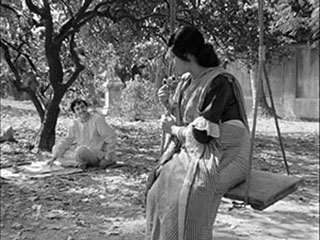 [Left] “Cinematically, she goes high and comes down with each swing. It lyrically embodies her own feelings. She has this light smile, and her eyes are very hungrily looking at Amal,” says Dr. Dr. Pravina Cooper, of a scene in Charulata.
[Left] “Cinematically, she goes high and comes down with each swing. It lyrically embodies her own feelings. She has this light smile, and her eyes are very hungrily looking at Amal,” says Dr. Dr. Pravina Cooper, of a scene in Charulata.
While the Apu Trilogy follows one character in different life stages, each movie of the Kolkata Trilogy revolves around the struggles of various individuals. The first film, Pratidwandi or “The Adversary,” based on Sunil Gangopadhyay’s novel, is about Siddartha, a medical school dropout who struggles to land a job. Seemabaddha or “Company Limited,” based on Mani Shankar Mukherjee’s novel, revolves around Shyamal, a marketing manager at a British firm in Kolkata, who engages in corruption in order to become a company director. The final film, Jana Aranya or “The Middleman,” also based on a Mani Shankar Mukherjee novel, follows the journey of Somnath, a young self-employ-ed salesman who behaves unethically in order to remain in business.
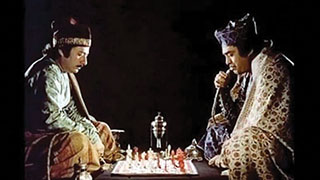
[Right] In Shatranj Ke Khilari, Ray brilliantly uses a multi-day game of chess between two noblemen as a metaphor to show the British army taking over India, one piece at a time, until they control the entire board.
Dr. Hariharan recalls, “Many companies were afraid to recruit people who were sympathetic to the Naxalites.” In Pratidwandi, an interviewer asks Siddartha, “What is the most significant thing that happened in the last 10 years?” When he responds, “Vietnam,” the interviewer asks, “you think Vietnam, not man landing on the moon?” The interview concludes with Siddartha being asked, “Are you a communist?” This ongoing frustration in Sidhartha’s honesty and his inability to find a job ultimately causes him to have a mental breakdown, a symbol of the stress experienced by many young people in India at that time.
Shatranj Ke Khilari or “The Chess Players” was one of Ray’s only two Hindi films, the other being Sadgati or “The Deliverance”. Made in 1977, Shatranj Ke Khilari is set in the princely state of Awadh, the region of modern-day Uttar Pradesh, at the onset of British Imperialism in 1856. Nawab Wajid Ali Shah, the last ruler of Awadh, is unable to prevent the British from assuming control of his kingdom. In the midst of this upheaval, the story revolves around two noblemen, Mirza Sajjad Ali and Mir Roshan Ali, both of whom have major family and financial troubles that they are choosing to ignore. They shirk their duties and flee Lucknow, Awadh’s capital, to a small, quiet village where they become engrossed in a multi-day game of chess that Ray uses as a metaphor to show the British army taking over India, one piece at a time, until they control the entire board.
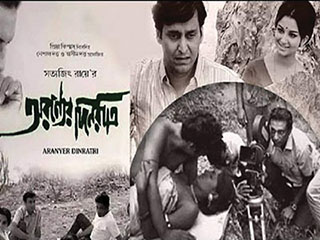
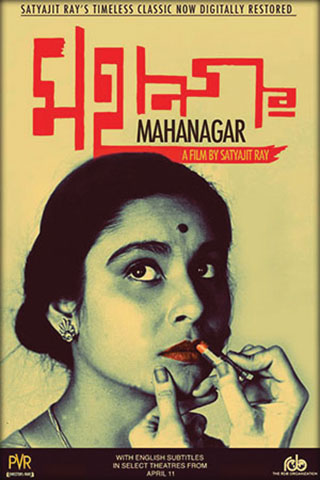
[Left top] Ray’s Mahanagar depicts feminist and progressive themes that were ahead of its times.
[Right top] Aranyer Dinratri highlights the effects of urbanization using the literary technique called “carnivalesque,” using humor and chaos to make a more substantial point.
Ray’s major period of filmmaking is the 1960s, which Dr. Hariharan describes as his “experimentation with different genres.” He continues, “Many of these films focus on the growing urbanization and moving away from nature in India. Ray asks: Is urbanization and moving away from the heart of India really the best solution? One of the films that best addresses this question is Aranyer Dinratri or ‘Days and Nights in the Forest.’” The story revolves around four friends from Kolkata who take a break from their typical, hectic urban lives to vacation in rural Bihar. Initially, the friends spend most of their time binge drinking at local bars. However, once they connect with local residents, they begin to embrace the simplicity of rural life. In turn, they realize how the status and privilege they thought they enjoyed in the big city meant very little in reality.
Dr. Cooper considers Ray to be very political. She states, “Through his fiction, he demonstrated his politics. He was extremely taken up by the issues of nationalism.” However, rather than provoking agitation and fear, Ray encouraged activism by appealing to the gentleness of the human soul. Dr. Cooper contrasted Ray with other filmmakers who, in her words, “make the viewer feel sad and ugly about the situation, but once you finish watching something by Ray, you feel happy, loved and restored. There is a sense of redemption. Dramatically Ray gives you a good feeling.”
Realism that evokes the depth of universal human feelings
Ray was indeed a pioneer in Indian cinema who brought real-world concerns to the big screen. Martin Scorsese, the renowned Oscar-winning director, said “[his] artistry and filmmaking took my breath away.” Rather than portraying an entertaining romantic picture of India, Ray displays human nature in connection with the harsh reality faced by a large segment of the nation’s population. His movies are, thus, a gentle call to action which evoke sympathy for a character’s plight and make us realize the universality of human emotion.
In a video on YouTube, “Creative Artists of India-Satyajit Ray,” Ray comments, “Filmmaking is exciting because it brings me closer to my country and my people. Each film contributes to a process of self-education, making me conscious of the enormous diversity of life around me. I try through my films to trace the under-lying pattern that binds this life together.”
While I started out to simply watch and learn about Satyajit Ray and his movies, I have gained something much deeper. Looking at life through Satyajit Ray’s camera has made me appreciate the power of observation and become more aware of the depth of human feelings even when situations appear calm and quiet. Ray shows the normality in our yearning to be loved, accepted and successful. And he does it in a way that is deeply rooted in India but is still universal, crossing the boundaries of language and geography to connect with the humanity that is in each of us.
Nikhil Misra-Bhambri is a freelance journalist living in Los Angeles, California. He graduated in history from the University of Southern California (USC) and writes about relationships between cultures, cuisine, music and history.
Quotes from the film fraternity on Satyajit Ray
AKIRA KUROSAWA: “The quiet but deep observation, understanding and love of the human race, which are characteristic of all his [Ray’s] films, have impressed me greatly. … I feel that he is a ‘giant’ of the movie industry. Not to have seen the cinema of Ray means existing in the world without seeing the sun or the moon. … People are born, live out their lives, and then accept their deaths. Without the least effort and without any sudden jerks, Ray paints his picture, but its effect on the audience is to stir up deep passions. How does he achieve this? There is nothing irrelevant or haphazard in his cinematographic technique. In that lies the secret of its excellence.”
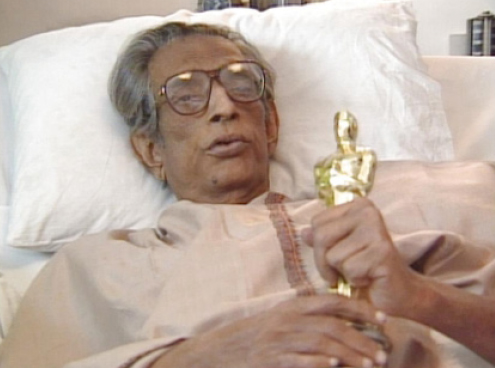
AUDREY HEPBURN (During the live telecast of the 64th Academy Awards in 1992, while conferring the Honorary Lifetime Oscar to Ray): “The Academy Board of Governors has voted to award an Honorary Oscar to the great Indian filmmaker Satyajit Ray. Academy recognizes Mr Ray’s rare mastery of the arts of motion pictures and his profound humanism which has had an indelible influence on film- makers and audiences throughout the world…”
MERYL STREEP: “His handling of actress Madhabi Mukherjee in Charulata shows how much respect and dignity Ray gave to his actresses. That itself is the hallmark of a true director. I have not an iota of doubt that if Ray worked in Hollywood, he would have proved a tough competition for the likes of Sir David Lean, Francis Ford Coppola and Sir Alan Parker.”
Satyajit Ray with the Honorary Lifetime Oscar Award.
MARTIN SCORSESE: “We all need to see the films of Satyajit Ray and re-see them, again and again. Taken all together, they’re one of our greatest treasures.”
JULIA ROBERTS: “Not even in Hollywood do we have a director of Ray’s caliber today. When special effects and technical superiority were unknown to the cinema, he created masterpieces in the simplest form.”
KEANU REEVES: “My only understanding of India (in his younger days) was through the Satyajit Ray films I watched in film festival after film festival. They are incredible. That is how I perceive India—real, warm and unaffected.”
ELIA KAZAN: “I have admired his films for many years and for me he is the filmic voice of India, speaking for the people of all classes of the country. … He is the most sensitive and eloquent artist, and it can truly be said in his case that when we honor him, we are honoring ourselves.”
Ray's Body of Work
(Listed in chronological order, from 1955 to 1991. These films can be watched on one or more of the following: Amazon, YouTube, ErosNow, Zee5, JioCinema, BongFlix and other streaming platforms.)
- Pather Panchali (Song of the Little Road)
- Aparajito (The Unvanquished)
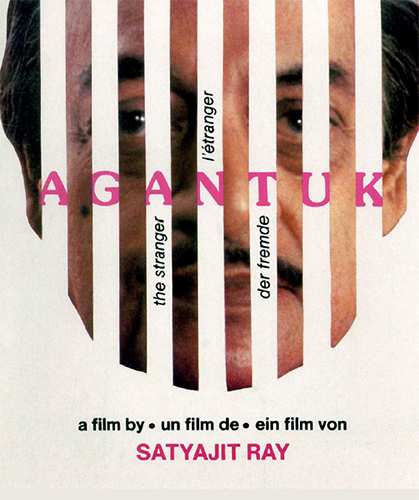
- Parash Pathar (The Philosopher’s Stone)
- Jalsaghar (The Music Room)
- Apur Sansar (The World of Apu)
- Devi (The Goddess)
- Teen Kanya (Three Daughters)
- Rabindranath Tagore
- Kanchenjungha
- Abhijan (The Expedition)
- Mahanagar (The Big City)
- Charulata (The Lonely Wife)
- Two (Short film)
- Kapurush-O-Mahapurush (The Coward and the Holy Man)
- Nayak (The Hero)
- Chiriyakhana (The Zoo)
- Goopy Gyne Bagha Byne (Adventures of Goopy and Bagha)
- Aranyer Dinratri (Days and Nights in the Forest)
- Pratidwandi (The Adversary)
- Seemabaddha (Company Limited)
- Sikkim
- The Inner Eye
- Ashani Sanket (Distant Thunder)
- Sonar Kella (The Fortress)
- Jana Aranya (The Middleman)
- Bala
- Shatranj Ke Khilari (The Chess Players)
- Joi Baba Felunath (The Elephant God)
- Hirak Rajar Deshe (Kingdom of Diamonds)
- Pikoo (Pikoo’s Day)
- Sadgati (The Deliverance)
- Ghare-Baire (Home and the World)
- Sukumar Ray
- Ganashatru (Enemy of the People)
- Shakha Prashakha (Branches of the Tree)
- Agantuk (The Stranger)
Enjoyed reading Khabar magazine? Subscribe to Khabar and get a full digital copy of this Indian-American community magazine.
blog comments powered by Disqus














